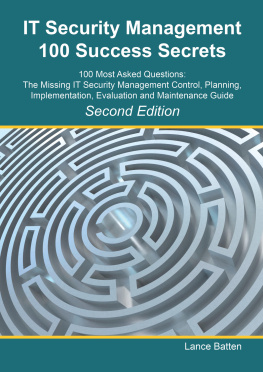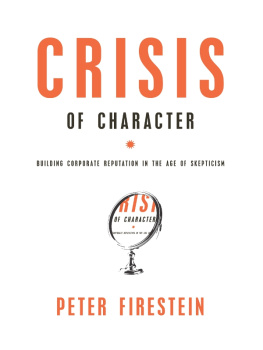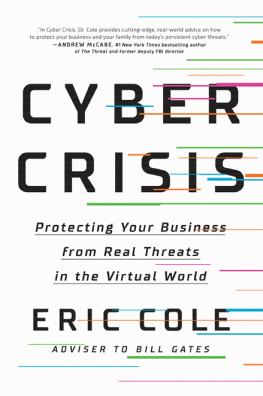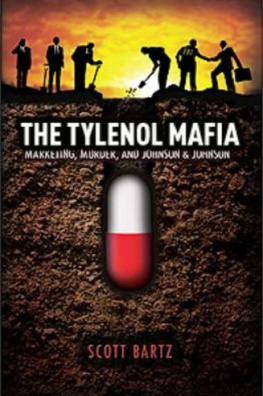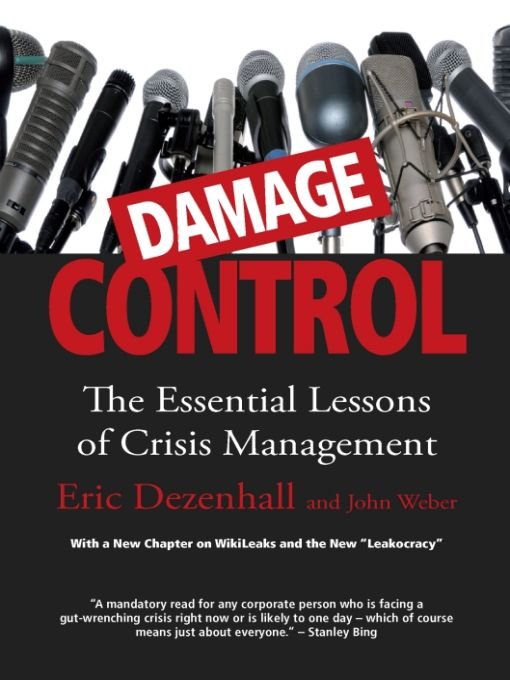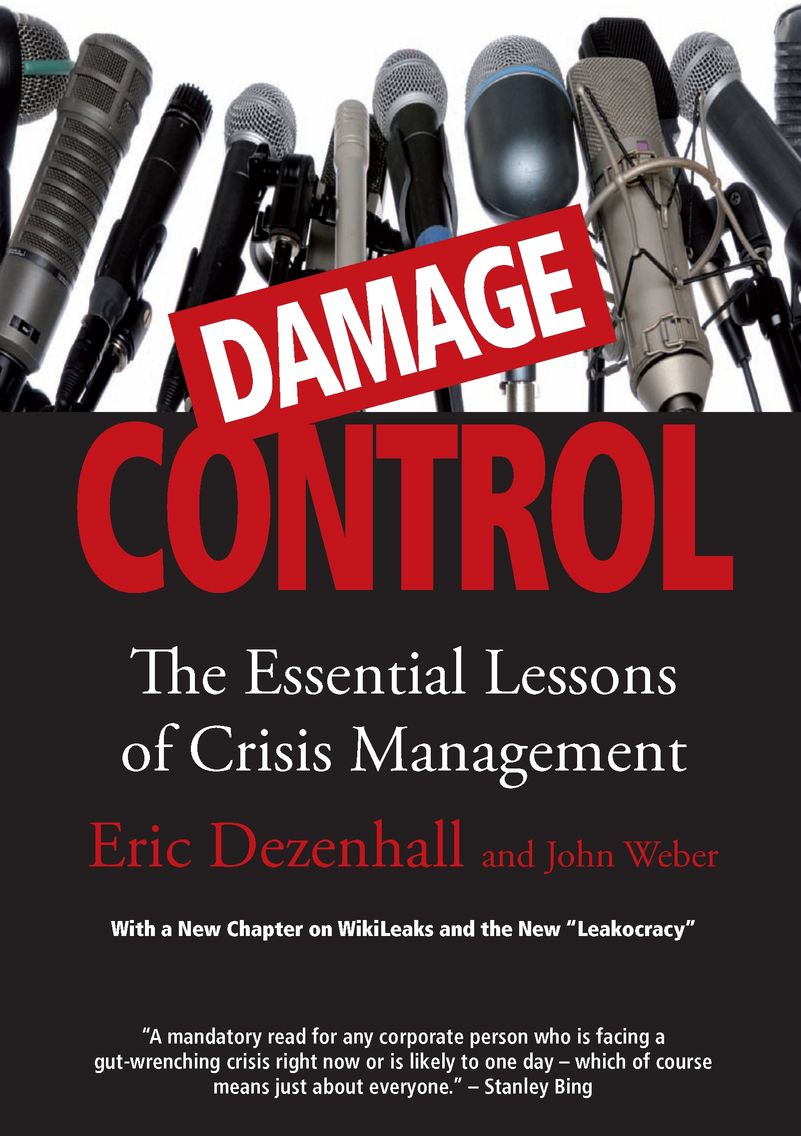Table of Contents
DAMAGE CONTROL
Eric Dezenhall is the CEO of Dezenhall Resources in Washington, D.C. He began his career in the White House Office of Communications during the Reagan presidency. Prior to starting his own firm, he worked at an international public relations agency and a political consulting firm. He is also the author of Nail Em: Confronting High-Profile Attacks on Celebrities and Businesses. His forthcoming novel The Devil Himself will be published by Thomas Dunne/St. Martins in the summer of 2011
John Weber is the president of Dezenhall Resources and the firms second partner. He oversees client services and is the primary liaison with its affiliate agencies in the United States and Europe. Weber previously served as a senior manager at three of the worlds largest public relations firms. He began his career in marketing and advertising.
Visit their Website at www.DezenhallResources.com
To Donna and Stephanie
ACKNOWLEDGMENTS
The authors wish to thank the following people for their behindthe-scenes assistance with Damage Control: Bernadette Malone, Adrian Zackheim, Will Weisser, Kris Dahl, Bob Stein, Susan Haralson, Stuart Dezenhall, and Malinda Waughtal.
AUTHORS NOTE
This book includes numerous case histories and examples of both well and poorly managed crises. While some of these are based on our direct involvement, many are not. Where an example is based on our experiences, we have obscured the facts to protect the identities of clients we did not want to reveal. It has always been, and will continue to be, the corporate policy of Dezenhall Resources not to reveal our clients or to discuss, without their permission, our work on their behalf.
INTRODUCTION
Youre gonna need a bigger boat.
CHIEF BRODY, JAWS
We knew we werent going to take the case within thirty seconds of walking into the boardroom. This prospective clienta large consumer health products concern under attack by the news media, government regulators, activist groups, trial lawyers, and shareholderswas going to get slaughtered, but not because its crisis was so bad. It wasnt as if its best-selling product was alleged to be killing people.
The prospective clientlets call the company Socratescalled us in to meet its crisis management team. We had been under the impression that the objective of the meeting was to listen to Socrates tell us its side of the storywhy its best-selling product was under attack. Then, presumably, wed give Socrates our initial ideas on how to defuse the attack.
One look at the dynamics of the room, however, and we knew we had landed smack dab in the middle of what we sarcastically call a beauty contest. Beauty contests are presentations that are held ostensibly to hear out the ideas and credentials of the potential consultants available for hire. Sounds legitimate, right? The real purpose, however, of a beauty contest in many high-stakes PR assignments is to identify the consultant who is least likely to get anyone sitting at the table fired.
A company in crisis is often no longer a company at all: Its a collection of individuals, each of whom is looking for personal cover. Truth be told, the companys welfare was low on the priority list of the individuals in this room.
This probably seems like a cynical assessment.
Welcome to the blunt talk of contemporary damage control, which requires a sober appreciation of both human nature and the tides of Fortune. After all, crisis management is storytelling, and a good story begins by recognizing the omens set out for us by the flawed human beings and institutions in the narrative. When Jawss Chief Brody observed that Quints crew needed a bigger boat, he was doing more than making an observation; he was making a strategic assessment of both the practical tools that would be needed to catch the great shark and inquiring about the resolve of the shark-hunting team.
Resolve must be anchored in a realistic appreciation of the challenges at hand. Ironically, in an age of crisis, business culture is living in a Spintopiaan environment in which business schools, consultants, and pundits dispense Mother Goose aphorisms about crisis management that contradict what real-world life experience teaches. The advice crisis consultants give is often designed to benefit the consultant, not the client.
Were in the crisis management business. A crisis managers job is to make bad news go away. We are the trauma surgeons of public relations. Corporate scandals, high-profile litigation, product safety allegations and recalls, boycotts, brand smears, government investigations and prosecutionsthese unwanted events are our daily challenges.
Conventional public relations is enamored with reputation management, empowerment, trust, the message, and other guru-driven happy talk that serves little purpose other than to give people in very tough situations the illusion of control.
Martha Stewart just needs to apologize, a pundit says on CNN. If Nixon had just said right away, I screwed up, there would have been no Watergate scandal, a political science professor speculates. If Coca-Cola had just recalled their product right away, that whole Belgian mess wouldnt have happened, a business school case-study lecturer asserts. Weve got to tellem all the good things your products do, a public relations account executive assures her polluting client in a new-business pitch, adding with a sparkle, Remember, a crisis is an opportunity to get your message out!
Crisis management is the enterprise of telling ugly truths. Ideally, it is the pursuit of redemption in the marketplace. When one has done wrong, repentance is required. When one has been wronged, a vigorous defense must be mounted.
Even before the meeting at Socrates formally began, our team, drawing on eighty collective years in the high-stakes communications business, saw four telltale signs of crisis management doom:
1.
The chief executive officer was absent.The task of crisis and issues management had fallen to Socrates public relations chief. Theres no question that the chief communications officer must play a key role in the crisis, but, as a rule, companies that see communications as the answer to its problems rarely have the management juice to make the decisions necessary to resolve the crisis. Does the PR chief have the authority to recall a product? Can she order a product reformulation? Can she shut downand then rebootworldwide production and distribution? Does she have the ear of Wall Street analysts? Does she have bet-the-company authority? The answer to all these questions is probably no.
In times of crisis, the chief executive officer must be the chief crisis officer, or, if not the CEO, the business unit chief who has the authority to make fundamental decisions. In the gathering at Socrates, the real powers to resolve the crisis were not in the room.


